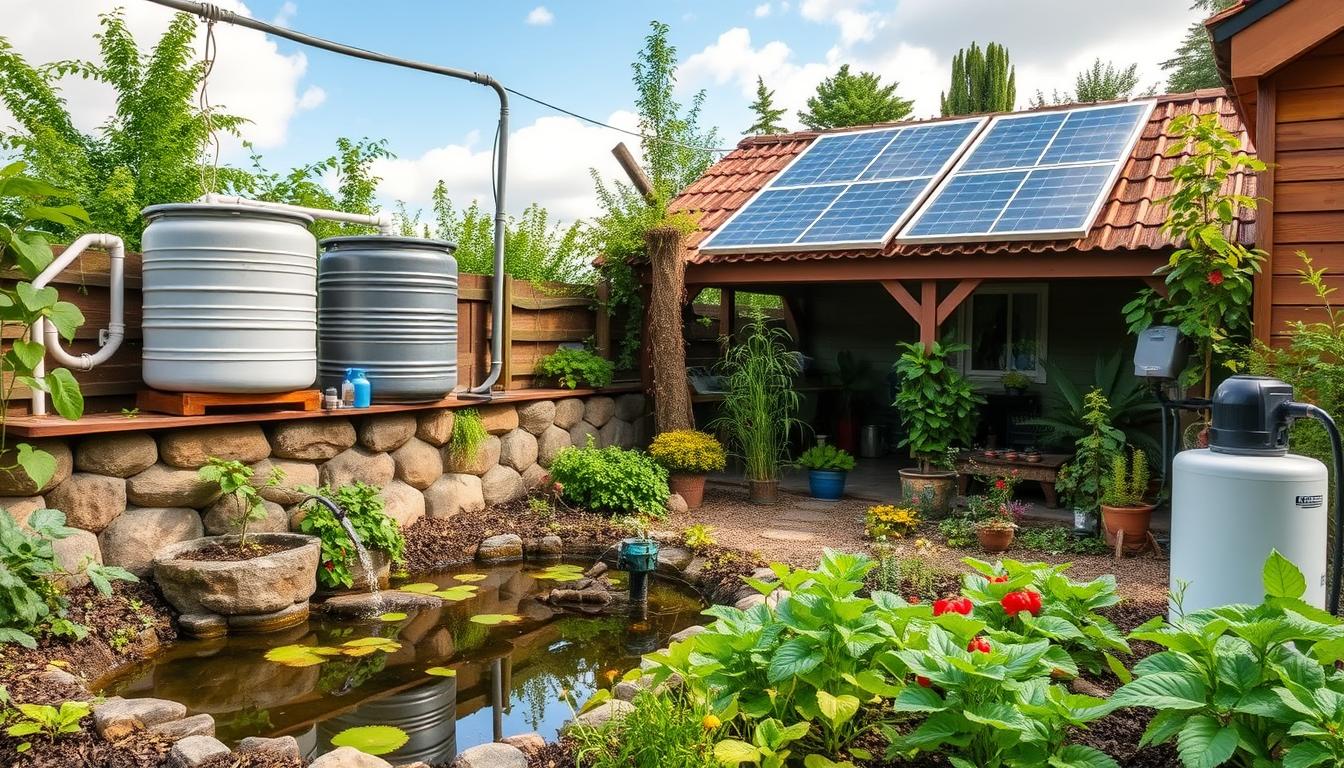In today’s world, being ready and knowing how to protect yourself is key. This guide covers survival self-defense, giving you important tips and strategies for your safety. It helps you deal with threats in public, or protect your home or work. You’ll learn how to handle tough situations with the right tools and mindset.
Key Takeaways
- Develop a survival mindset to stay alert and prepared for potential threats
- Learn effective self-defense techniques, including strike and block strategies
- Recognize warning signs and common risks to avoid dangerous situations
- Understand the legal aspects of self-defense and your rights
- Implement home and workplace safety measures to enhance personal security
- Explore non-lethal self-defense tools and equipment for personal protection
- Cultivate situational awareness to stay vigilant and respond quickly
Understanding the Importance of Self-Protection
In today’s world, keeping yourself safe is crucial for everyone. Learning survival self-defense and being aware of threats is key. These skills can shield us from risks like physical fights, sexual assaults, or home invasions. Not taking these steps can lead to serious harm.
Why Personal Safety Should Be a Priority
It’s not just about staying safe physically. It’s also about keeping your mind and heart healthy. By learning how to defend yourself, you can feel more secure and less stressed. Knowing about threats helps you make smart choices to protect yourself and your family.
Common Threats and Risks to Avoid
- Physical Altercations: Verbal disagreements can turn violent fast, putting you at risk of getting hurt or worse.
- Sexual Assaults: These can happen anywhere, making it important to know how to defend yourself and stay alert.
- Home Invasions: Burglaries can cause a lot of emotional and financial damage. Keeping your home safe and watching out for odd behavior helps.
- Cybercrime: With more online use, we also face threats like identity theft and cyber-stalking. Protecting your online info is key.
Seeing personal safety as a top concern is a smart move for a safer, more confident life. By understanding survival self-defense and threat awareness, you can handle risks better and stay secure.
“The first step to personal safety is understanding the potential threats and risks. Knowledge is power, and with it, you can take the necessary precautions to protect yourself and your loved ones.”
Developing a Survival Mindset
In the world of personal safety and survival self-defense, having a strong mental resilience is key. It’s not just about being ready physically. It’s also about adapting, thinking clearly, and staying calm when things get tough.
To start building a survival mindset, work on your situational awareness. This means paying attention to what’s around you, thinking about possible dangers, and having a plan. Being alert and taking action early can help you avoid risky situations.
Also, it’s important to build mental resilience for tough times. This means having a positive outlook, managing stress, and being determined to get past hurdles. Having a strong mindset can greatly improve how you handle threats.
“The will to survive is not as important as the reason to survive.” – Viktor Frankl
Preparedness is more than just physical strength. It’s also about mental strength to face and beat challenges. By developing a survival mindset, you boost your self-defense skills and increase your safety in tough situations.
A strong survival self-defense mindset means more than just reacting to threats. It’s about keeping yourself safe and well in every part of life.
Essential Self-Defense Techniques
Learning essential self-defense techniques is key for personal safety. These skills help you protect yourself and act fast in danger. From strike and block strategies to escaping dangerous situations, we’ll cover the main parts of self-defense.
Strike and Block Strategies
Starting with self-defense means knowing how to strike and block. These moves can stop an attacker and help you get away safely. Here are some important techniques:
- Palm strikes to the nose or chin
- Elbow strikes to the ribs or face
- Knee strikes to the groin or midsection
- Blocking punches or grabs with your forearms
Practicing these self-defense strategies boosts your confidence. It gives you the skills to act quickly in a crisis.
Escaping Dangerous Situations
While strikes and blocks are key, the main goal is to get away from danger. Learning survival self-defense skills helps you spot danger, keep distance, and escape safely. Here are some tips:
- Identifying escape routes and exits
- Learning to step back and distance yourself from an attacker
- Practicing moves like sidesteps and footwork
- Looking for help or calling authorities
Mastering these techniques lets you make quick, smart choices. It increases your chances of getting out safely from dangerous situations.
“The best self-defense is to be prepared and aware of your surroundings at all times.” – Bruce Lee
Adding these self-defense techniques to your safety plan makes you stronger. It helps you develop a survival self-defense mindset. Remember, knowing and practicing these skills is how you protect yourself.
Situational Awareness: Staying Alert and Prepared
Personal safety greatly benefits from situational awareness. This means being aware of what’s around you and spotting warning signs. It’s key to staying safe in different places.
Recognizing Warning Signs
Knowing how to spot threats is part of being aware. Look for signs that something might be off. Trust your gut and watch for these warning signs:
- Unusual or suspicious behavior from people around you
- Changes in how a place feels or looks
- People you don’t know who seem out of place
- Unusual changes in how people move around
Spotting these signs helps you stay safe and avoid danger. Being aware is a strong way to protect yourself.
“Awareness is the first step in prevention. Stay vigilant, stay safe.”
Being alert doesn’t mean you should be scared all the time. It’s about feeling secure and knowing how to handle things with confidence.

Survival self-defense and personal safety
When threats come unexpectedly, it’s key to blend survival self-defense and personal safety into our daily routines. This guide covers how to build a strong preparedness mindset. It also teaches the key skills for handling emergencies.
Survival self-defense is more than just fighting skills. It’s about being aware, thinking ahead, and acting fast. By doing this, you can spot dangers, guess threats, and protect yourself.
Enhancing Personal Safety through Everyday Awareness
Being alert is a big part of survival self-defense. It means paying attention to what’s around you, noticing patterns, and spotting risks. This helps you make smart choices and avoid danger.
- Look around often to see threats or ways to get away.
- Listen to your gut – if something doesn’t feel right, leave the place.
- Learn about the laws where you live on self-defense and safety.
Practical Self-Defense Techniques for Everyday Life
Having a survival mindset is important, but knowing how to defend yourself is key. These techniques should fit your skills and the dangers you might face.
- Practice basic moves like strikes, blocks, and dodges to get better and feel sure of yourself.
- Learn how to use tools like pepper spray or alarms right and know the laws about them.
- Keep practicing to keep your skills sharp.
By using survival self-defense and personal safety tips every day, you boost your readiness and toughness. This lets you handle tough situations with confidence and calm.
“Survival self-defense is not just about physical techniques; it’s a holistic approach that encompasses mental awareness, situational analysis, and a proactive mindset.”
Legal Aspects of Self-Defense
Understanding the legal side of personal safety and self-defense is key. It’s important to know your rights and the legal use of force to protect yourself. This ensures you can defend yourself without breaking the law.
Understanding Self-Defense Laws
Self-defense laws differ from place to place. It’s vital to learn the laws in your area. Usually, using force in self-defense is okay if you think you’re in real danger of being harmed or killed. The force you use must match the threat you face.
- How severe the threat is, if there were other ways to handle it, and the force used will affect if your self-defense is legal.
- Knowing the legal limits on force is important. Using more force than allowed can lead to criminal charges or civil suits.
Talking to a local lawyer can give you great advice on your area’s self-defense laws. This can help you make smart choices and avoid legal trouble.
“The right of self-defense is the first law of nature.” – James Otis

Learning about the legal side of personal safety and self-defense helps you protect yourself legally. Staying updated and getting advice from experts can guide you. This way, you can make wise choices and avoid legal problems.
Home and Workplace Safety Measures
Ensuring personal safety goes beyond just learning self-defense. It’s important to focus on safety at home and work too. By using simple yet effective strategies, we can make our spaces safer and lower the risk to our well-being.
For home security, a good home security system is key. These systems have motion sensors, cameras, and smart locks. They let us watch over our homes and keep intruders away. Also, keeping our homes bright, securing doors and windows, and being careful with who we let in helps keep us safe at home.
At the workplace, following safety rules and knowing what to do in emergencies is crucial. This means taking part in drills, learning evacuation paths, and spotting hazards. Telling others about anything strange or security worries helps make work safer for everyone.
By focusing on home security and workplace safety, we can protect ourselves better. These steps make us feel secure and give us control over our surroundings. They help us lower the risks we face every day.
Self-Defense Tools and Equipment
Having the right tools and equipment can make a big difference in personal safety and self-defense skills. This part looks at different self-defense tools like pepper spray, personal alarms, and self-defense keychains. Knowing how to pick and use these tools can help people protect themselves better in many situations.
Non-Lethal Options for Personal Protection
Pepper spray is a common non-lethal tool that can stop an attacker by causing temporary blindness and breathing problems. Personal alarms make a loud sound to get attention and scare off potential threats. Self-defense keychains have features like steel tips or kubotans for striking and blocking in fights. These tools give people ways to defend themselves safely without risking serious harm.
When choosing self-defense tools, think about if they are legal, easy to use, and work well. It’s also key to learn how to use them safely and responsibly. With the right tools and knowledge, people can feel safer and more in control in dangerous situations.







